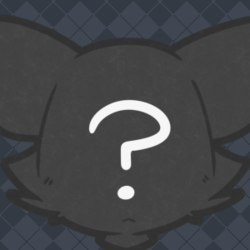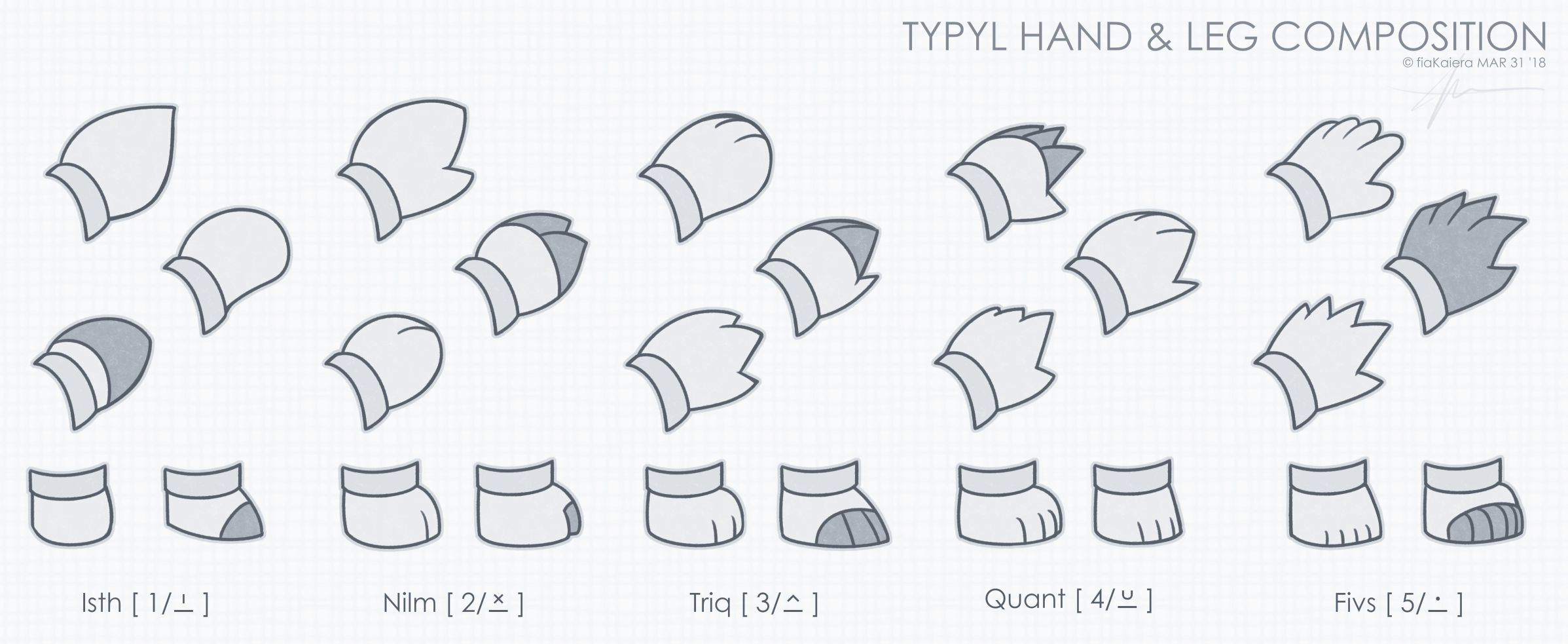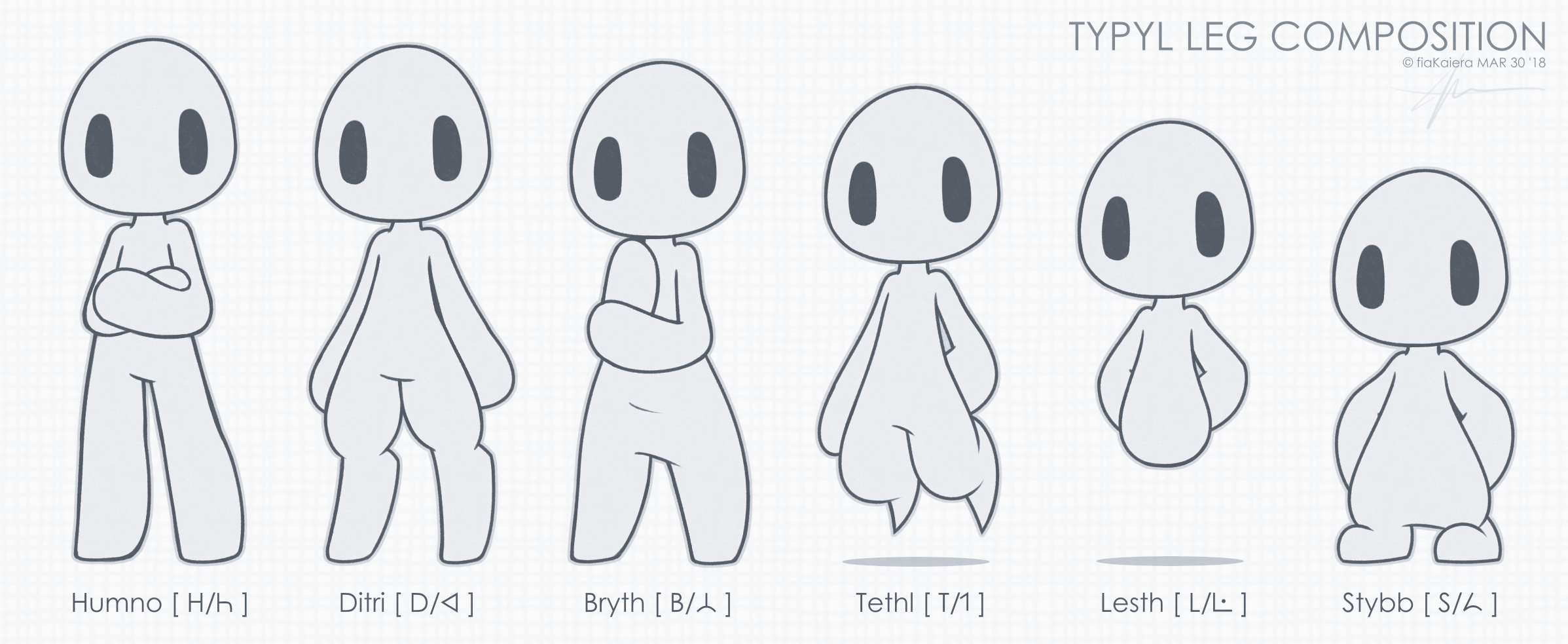Typyl
The Typyl (pronounciation: type-ill/typ-pill; タイピル, Taipiru) are a race of being in Furria found all over Fiagia and its moons. They are intelligent humanoid creatures with bodies similar to creatures from the Antecedent World, mostly containing human-like attributes and have the ability to create and manipulate Sorcia.
The Typyl are the main species that compromises most of the characters found in the series.
For community purposes, if one would make an original character based on anthropomorphic characters, they are Typyl by default.
The plural for “Typyl” is also “Typyl”.
The Typyl are an open species for Furria. Because of this, you can make your own character. To check out what makes a character, check out the Typyl Guide.
Biology
The Typyl are creatures that take the form similar to human beings: two eyes, a mouth, and two to four limbs comprising of two arms and mostly having two legs. Their legs and the digits found on their hands and legs are dictated by their composition.
Physicality
Though physical creatures, the bodies are mostly a physical construct of aspects, mainly :indivisus: Indivisus compacted into form. Any damage given to them will result in emitting white dust on wounds instead of blood and the material used to damage them will simply pass through with some resistance.
In place of a heart, the typyl equivalent to it is a beating core which contains their soul. Due to their physicality, they are also given the capability to revive. Should a Typyl enter near death, this is the only time they would have permanent wounds and spew out blood.
Height
Typyl are smaller compared to humans. The average height for a Typyl is that only 75% of the average height of a female human being,1) which is 3'10“ or 118.05cm i height. Despite this, females tend to be much shorter than average.
Adaptability
In addition to their human-like traits, they are able to adapt a mixture of qualities and traits from different species from several sources. These include:
- Some non-humanlike species found in mythical or mythological stories proposed by antecedents
- Plant-life species
Despite this, the species given must be typyl-compatible first before a Typyl can take form of their traits. When a Typyl takes form of their selected species, they are assigned to have a typ-type and a typ-fam, referred to as typing.
Concerning body types and structure, the Typyl body doesn't have to adhere and match the body type of their Typ-type. For example: A bear-type can have a body that of a type cat-type. Color pigments are also not limited to their Typ-type and are available to have a color of their choosing.
Typing
Due to the Typyl's composition, Typyl can adapt traits and attributes depending on their Typ-type and Typ-fam.
Typ-type
Typ-type (plural: typ-types; prounced: tip-tipe) or wholesomely known as Typyl Type is the classification of the Typyl based on what qualities and attributes a Typyl can have from the creatures they take form of. If one has more noticeable attributes from multiple species, the Typyl can be considered as a Hybrid instead.
There's a naming scheme for each Typ-type: {species}-type
For a list of different Typ-types, please refer to the Typing portion of the Typyl Guide.
Hybrids
When a Typyl has two or more noticeable distinct Typ-types, this typyl is considered to be a Typyl Hybrid, also known as a Hy-type (plural: hy-typ; pronounced: hi-type) in short.
When classifying a naming scheme for the Hy-type, the first two distinct types are used in the name, first being the most dominant type followed by the next most dominant type coming after.
This results in the Hy-type's naming scheme: {primary}-{secondary} Hy
Typ-fam
Typyl Family, or in short words: Typ-fam (plural: typ-fam; pronounced:tip-fam) is a classification for a group of Typ-types that resemble similarities and functions similar to Biological Families. If the Typyl is considered to be a Hybrid, the most dominant type's Typ-fam of the Typyl is considered.
Like Typ-type, there is a similar naming scheme for Typ-fam: {family}-fam
For a list of different Typ-fam, please refer to the Typing portion of the Typyl Guide.
Composition
A Typyl's composition can be distinguished by their composition of their body. Their composition can be determined by several parts of their body. Composition is split between three different factors: the number of digits found on their hands and feet, and the composure of their legs.
The composition of a Typyl can be easily written in this format: {hand|foot|legs} or {hand|L} if their leg composition is determined as Lesth.
Hand/Foot Composition
The composition for a Typyl's amount of digits for both hands and feet is split into five different kinds. Typyl are commonly known to have at least three to five digits with less than three being more rare.
Even through the hands of Typyl can be varied, the feet of Typyl are stubbier compared to humans.
The number of digits of how each digit is named are determined by the following:
1Isth: Pointer2Nilm: Pointer & Thumb3Triq: Pointer, Ring & Thumb4Quant: Pointer, Ring, Pinky & Thumb5Fivs: Pointer, Ring, Middle, Pinky & Thumb
Leg Composition
The composition for the Typyl's leg is also split into five different types. Each leg composition has its benefits and disadvantages depending on what leg composition the Typyl has.
The kind of legs a Typyl has is determined by the following:
HHumno: The first most common composition, also known as “Platigri”. They would stand with Plantigrade legs similar to humans. It is more weight-bearing and stable compared to the Ditri.DDitri: The second common composition. Originally known as “Digitri”, they stand with Digitigrade legs similar to ferals.BBryth: The upper legs are covered across, looking combined or having no upper legs but still flexible.TTethl: Having weak vine-like or similar free-flowing legs, they have innate ability to float.LLesth: They do not have legs, making it easy for them to have the efficiency to float around.SStybb: Both upper and lower legs are covered across, resulting to being visually seen as having stubby legs.
Lifespan and Reproduction
The average lifespan for a Typyl ranges from 80 to 120 years. From the age of 0, the typyl's body will start to grow steadily until the age of 30, reaching childhood at the age of 5, and is recognized as matured adults at the age of young adults being 20, though this can continue until their intelligence matures at the age of 25. Upon reaching the age of 30, their bodies will steadily be maintained until it starts to deteriorate starting at the age of 50.
Typyl are capable of reproduction via an egg. This egg grows overtime incubated inside the hosts body for the first half of its incubation and outside for the latter half of the period.
There is only a 20% chance that a Typyl is able to produce an offspring when attempted for reproduction, hence the low population. The chance of producing an unstable child with disability is extremely low due to the Typyl's nature. At most, Typyl have the average of bearing only 2 offspring. All Typyl possess a hidden cloaca to prevent accidental attempts.





